I recently drove 356km in a Australian Long Range Dual Motor electric car around Sydney. There were lots of short less than 10km trips as well as a 140km drive from Marrickville to Mount Annan Botanic Gardens return and a 165km loop drive from Marrickville to Holsworthy to Warragamba Dam to Penrith to Holsworthy and back to Marrickville.
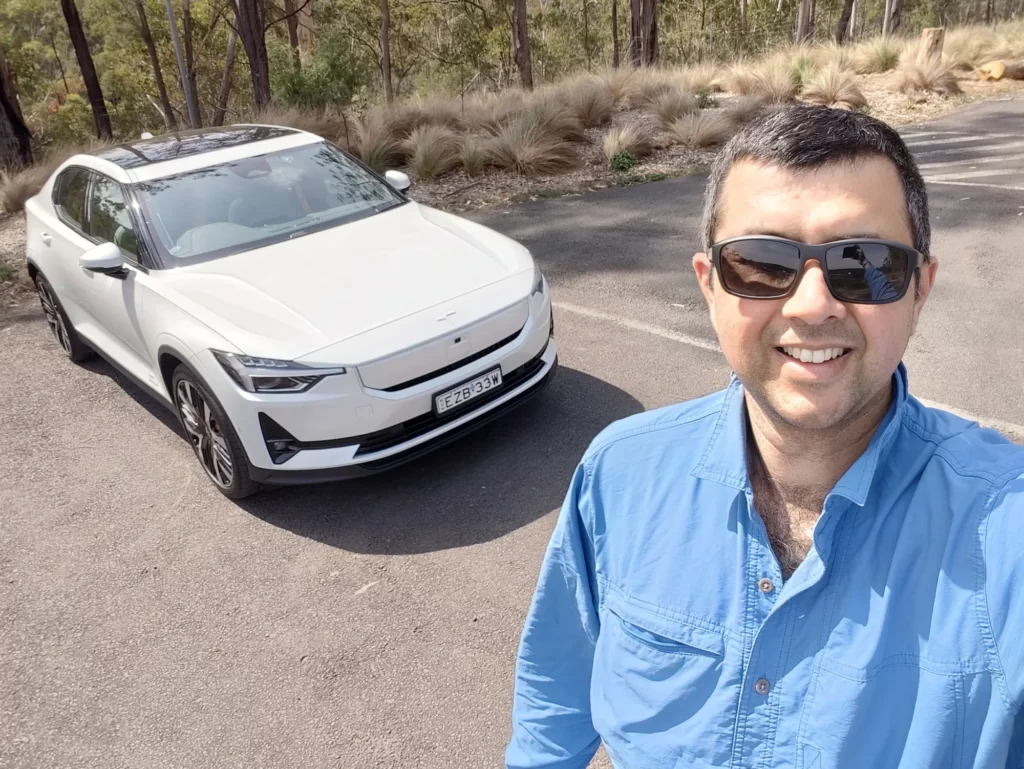
The Polestar 2 2024 comes in 4 versions: Standard range Single motor, Long range Single motor, Long range Dual motor and Long range Dual motor with Performance pack.
NSW prices range from $70,951.01 driveaway for the base Standard range Single motor model without any options up to $104,966.41 driveaway for the Long range Dual motor with Performance, Plus and Pilot packs.
Of the three optional Packs only the lowest cost Pilot Pack is a must have in order to add Pixel LED headlights with adaptive high beam, LED front fog lights with cornering function, Adaptive Cruise Control and Pilot Assist lane keeping aid.
The other Plus and Performance Packs are more luxury items and priced accordingly.
Disclosure: The car was loaned by Polestar Australia for 7 days to review. I agreed to meet all the associated running costs e.g. tolls, charging etc.
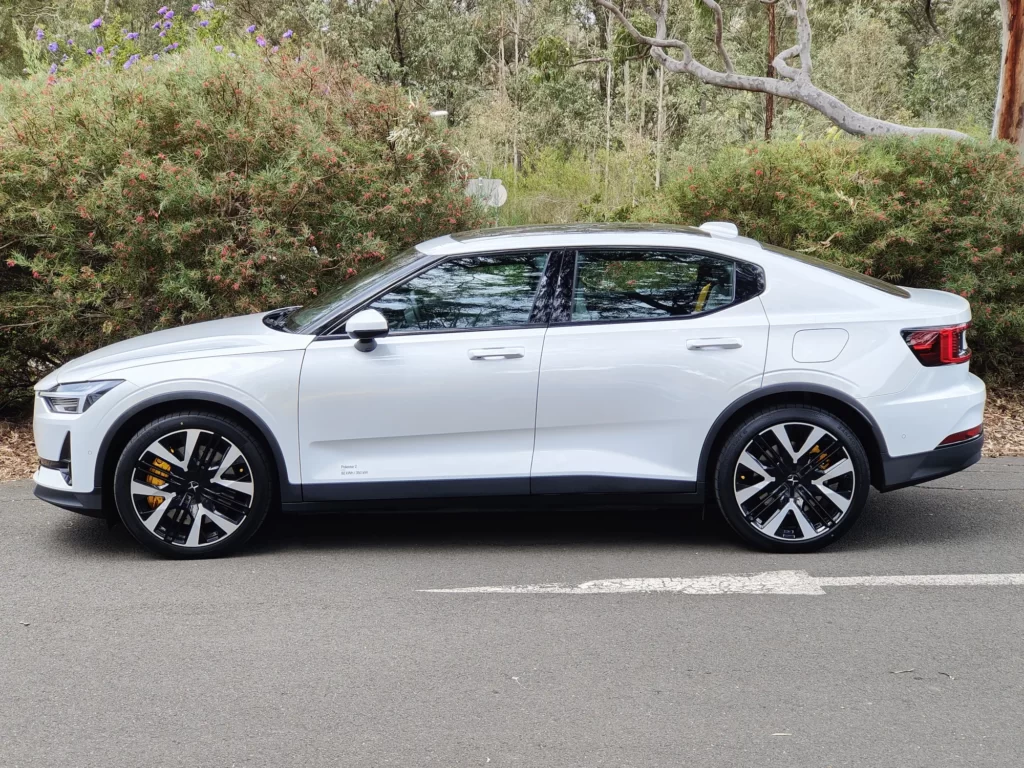
What I Liked
Range, Charging Speed & Thoughtful design
You won’t get range anxiety in a 2024 model Polestar 2 with 532km – 654km WLTP range regardless of which of the 4 versions you purchase.
Even the luxury Long Range Dual Motor Performance version I drove managed a real world mostly motorway range estimate of 482km (at full battery) which is more than enough to drive a long way like Sydney to Melbourne while only needing to fast DC charge to 70-80% 2 times.
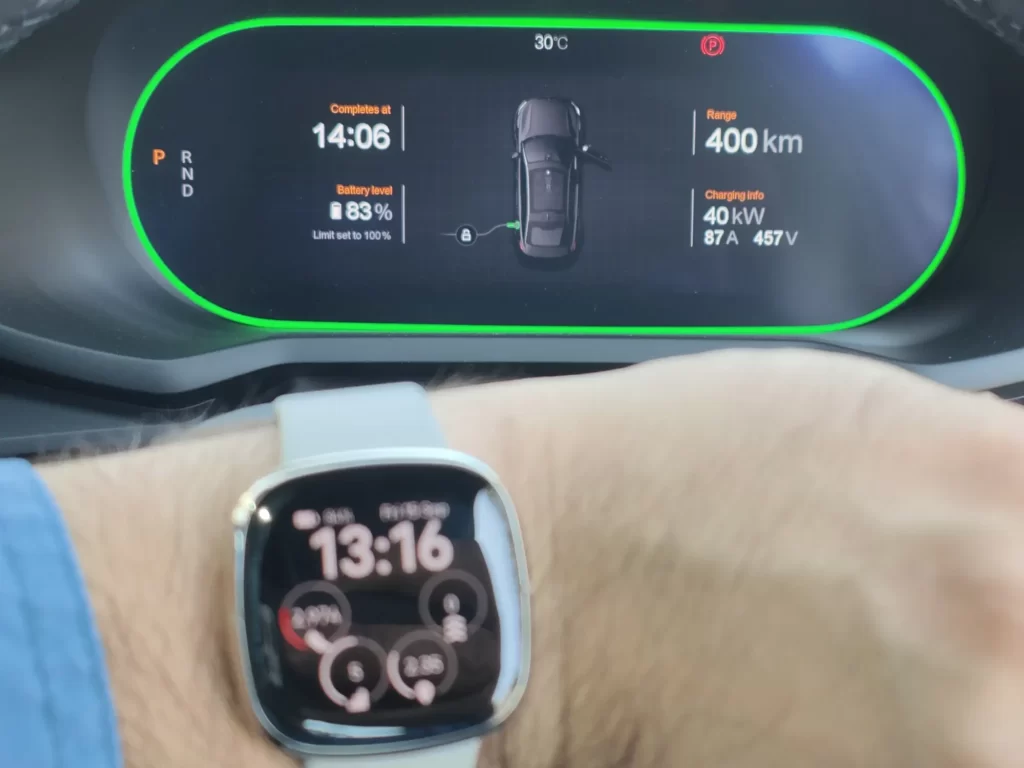
Polestar promises DC charging time of 10-80% in 28 min on an ultra fast charger. Watch my video below to see how the charging rate changed as the battery filled up.
The charge started at 44%/210km range on the car range guess-o-meter and finished at 83%/400km range. Sending 35.169kWh to the battery cost me $22.86 inc GST.
My suggestion based on this test is that the optimal stopping point is 73% for a Polestar 2 MY24 Long Range, balancing time spent versus charge gained at an ultra fast charger.
This is confirmed by a similar charging curve test result achieved by a Norwegian owner of a Polestar 2 MY24 Long Range.
Throughout the car it is clear that a lot of thought has been put in to improve the driving and ownership experience.
Despite the use of a shared car body architecture with petrol Volvo’s, the Polestar 2 still manages to offer decent boot space and a frunk, view my detailed storage tests with photos.

New 2024 model has better efficiency than previous model
Promised efficiency for the 2024 Long range Dual motor with Performance pack I tested is 16.8 – 17.2 kWh/100 km.
As you can see below in the stats this new 2024 version is on average just as efficient as promised.
It did remain thirsty during short urban stop start driving where the average was usually 19-21 kWh/100 km.
However on longer drives it is capable of sub 16kWh/100km results as shown below.
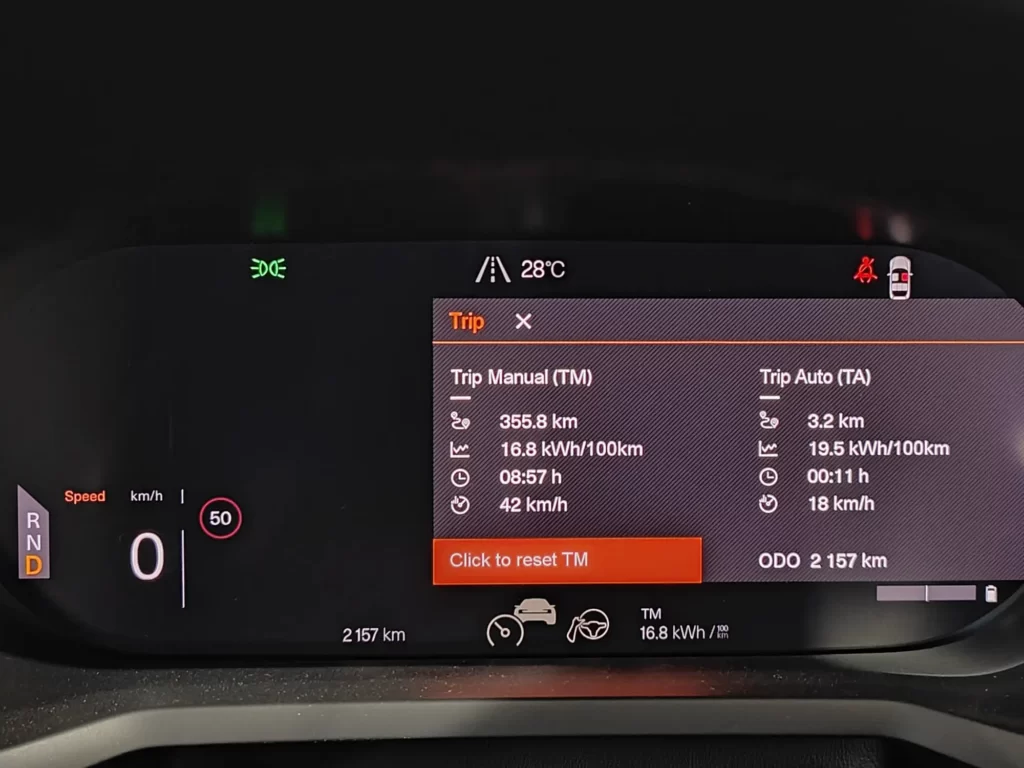
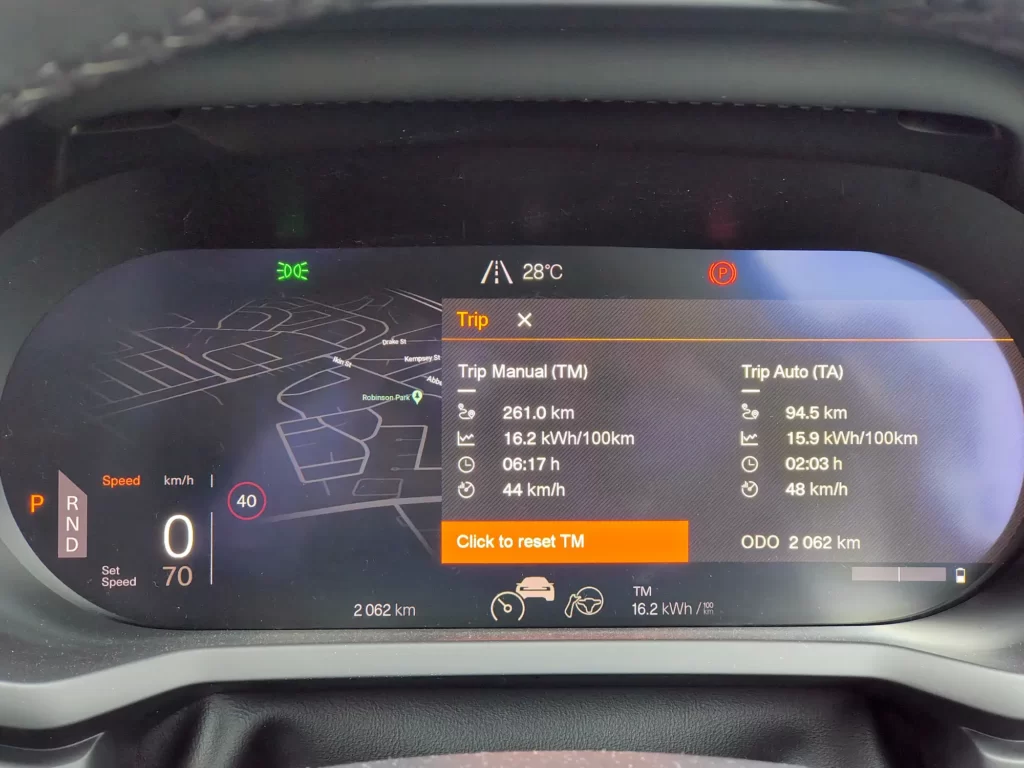
Over the air (OTA) updates
The Polestar 2 supports OTA updates via it’s built-in Optus connection (or Wi-Fi) and has received quite a few updates since the car was launched which has fixed bugs, improved functionality and added apps like Waze.
Another nice touch is that each update has a changelog that is publicly published.
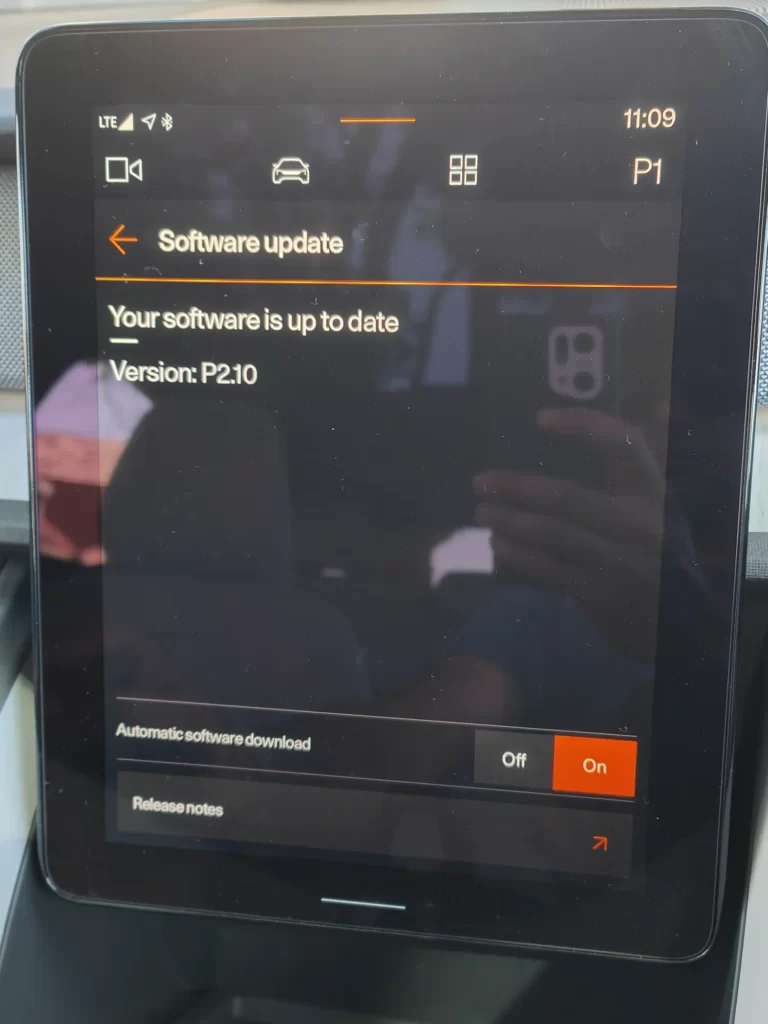
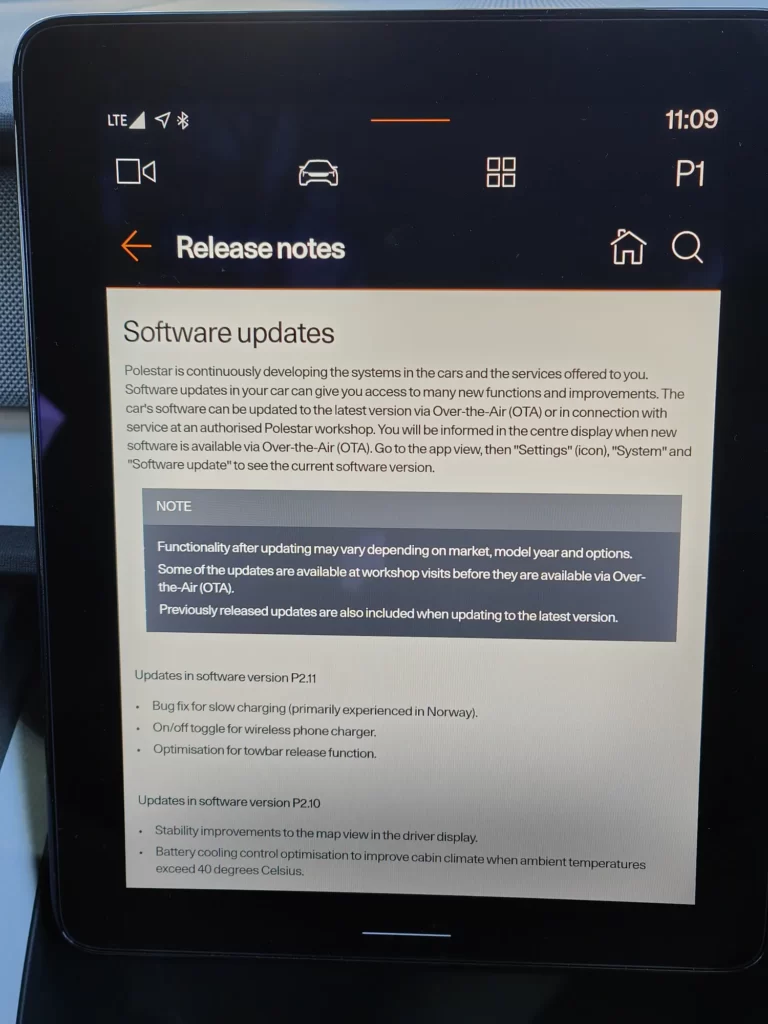
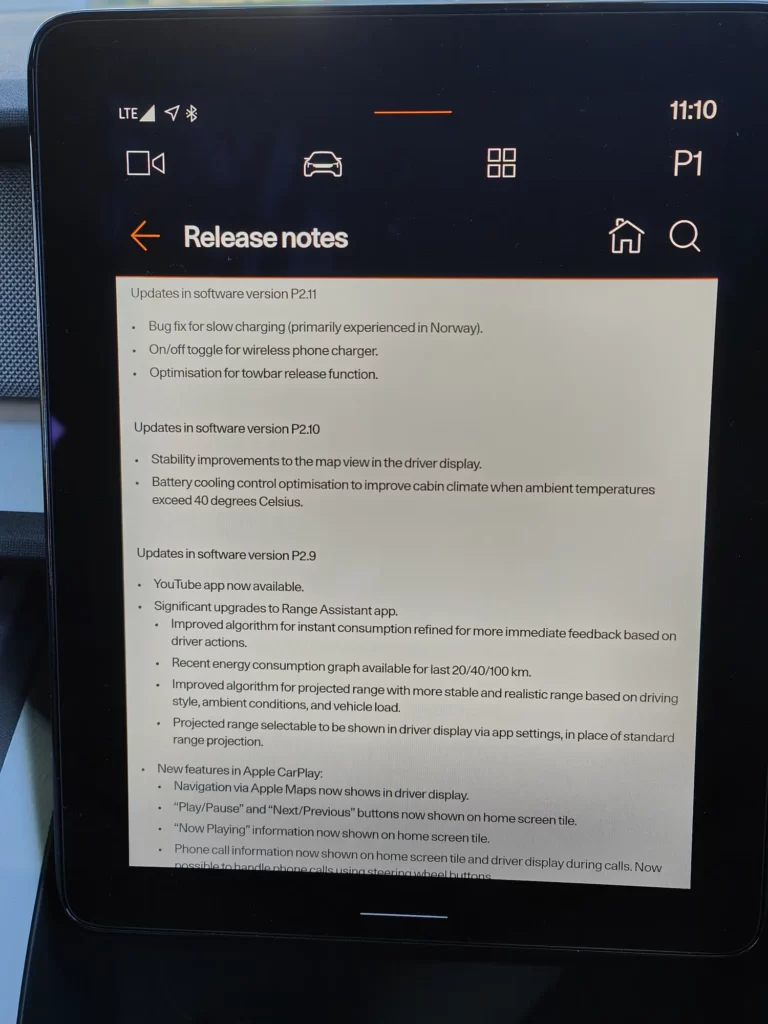
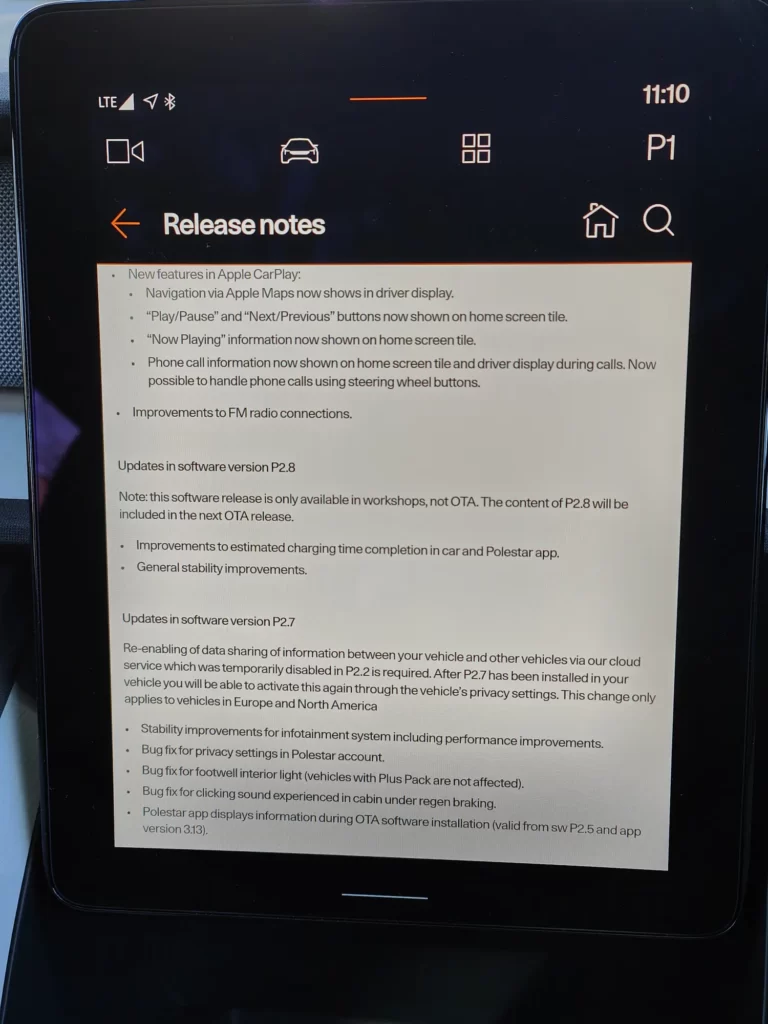
What Could Be Better
Google Automotive & Optus Connectivity
All Polestar 2 cars have Google Automotive as their built-in infotainment and car controls operating system, with the option of Apple Carplay as well.
Google Automotive is great in some ways eg : you don’t need to have a smart phone connected to the car to run apps like A Better Route Planner.
Another very useful feature is built-in Google Maps navigation with quite accurate guess of what percent your battery will be on arrival at destination.
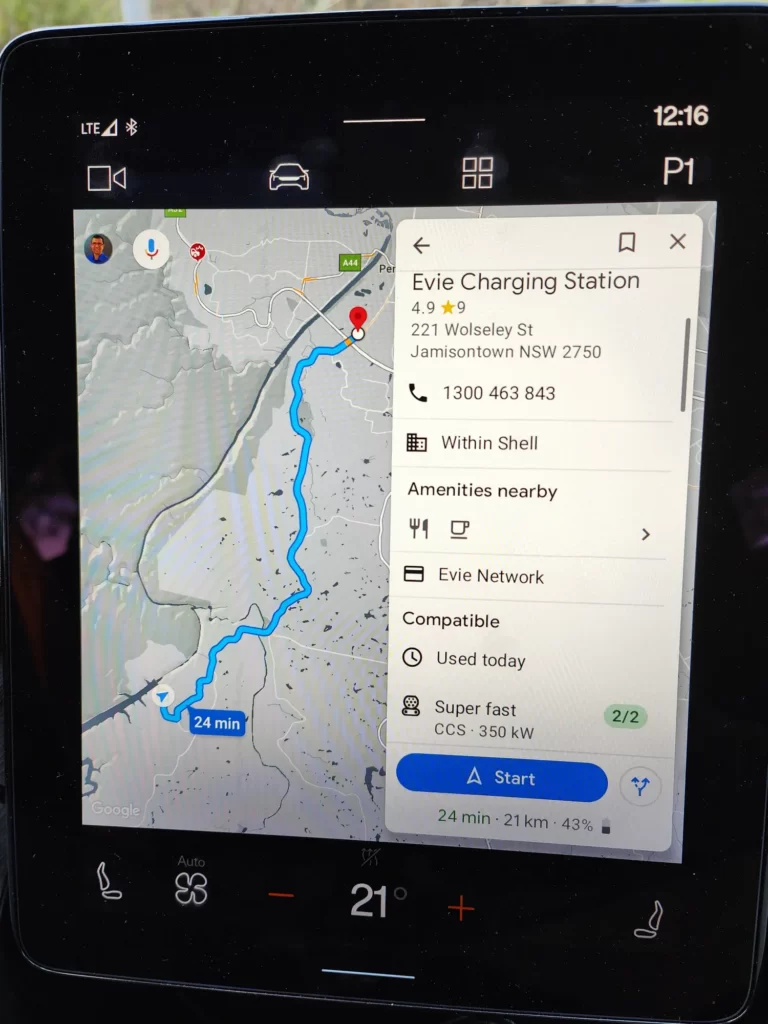
However Google Automotive has the weakness of only having a small number of apps available in it’s Play Store compared to the Android Auto experience (where the EV uses apps on your own phone wirelessly or wired).
As an example Polestar 2 cars have no messaging apps like Facebook Messenger and Whatsapp.
Built-in Polestar Optus mobile data connectivity is not only lacking in rural/regional areas where there is often only Telstra coverage but your car get a Singapore IP address due to the car having an Optus Singtel Enterprise connection.
This Singapore IP address causes location detection issues with streaming content as you can see below when I logged into Amazon Prime Video which thought I was travelling overseas.
Earlier this year I was told that the Polestar vehicles in Australia use “Optus with a Singapore Singtel IP address. Later this year it will switch to a local IP address”. On 28/9/23 Polestar Australia advised me “We continue to work through the transition. At this stage, it is anticipated that the switch will take place in Q4”.
I also asked is it possible for an Australian Polestar 2 owner to port the car connectivity from Optus to Telstra, either before or after the free 3 years of connectivity? On 28/9/23 Polestar Australia advised me “these parameters are being discussed and we will share information when possible”.
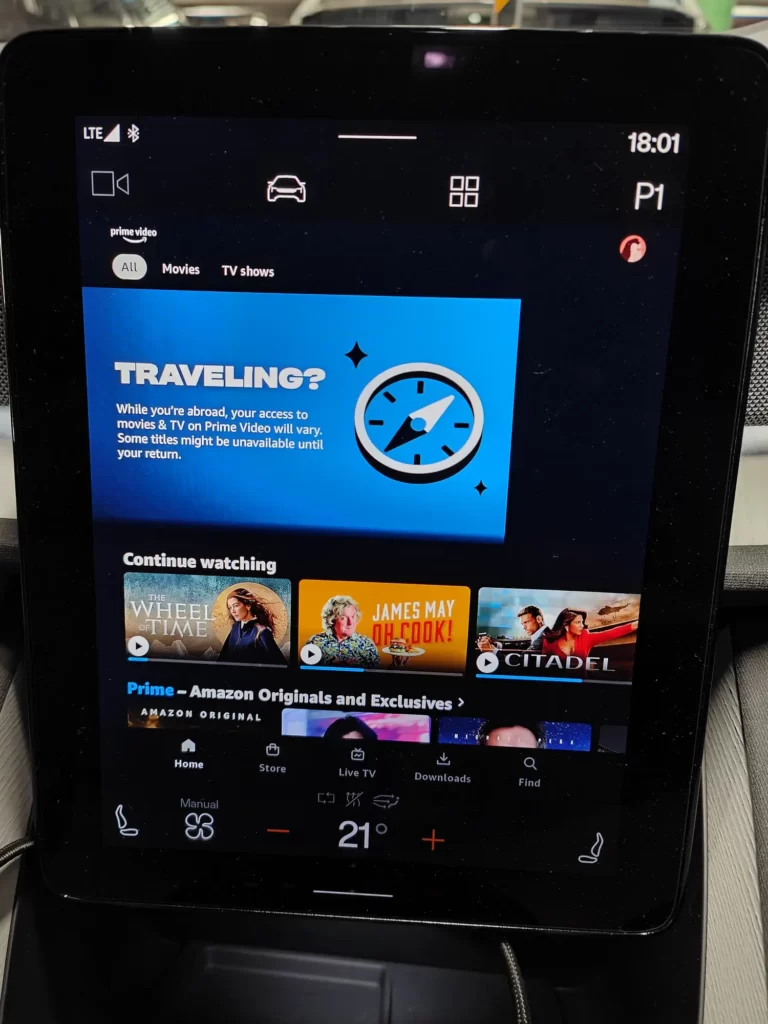
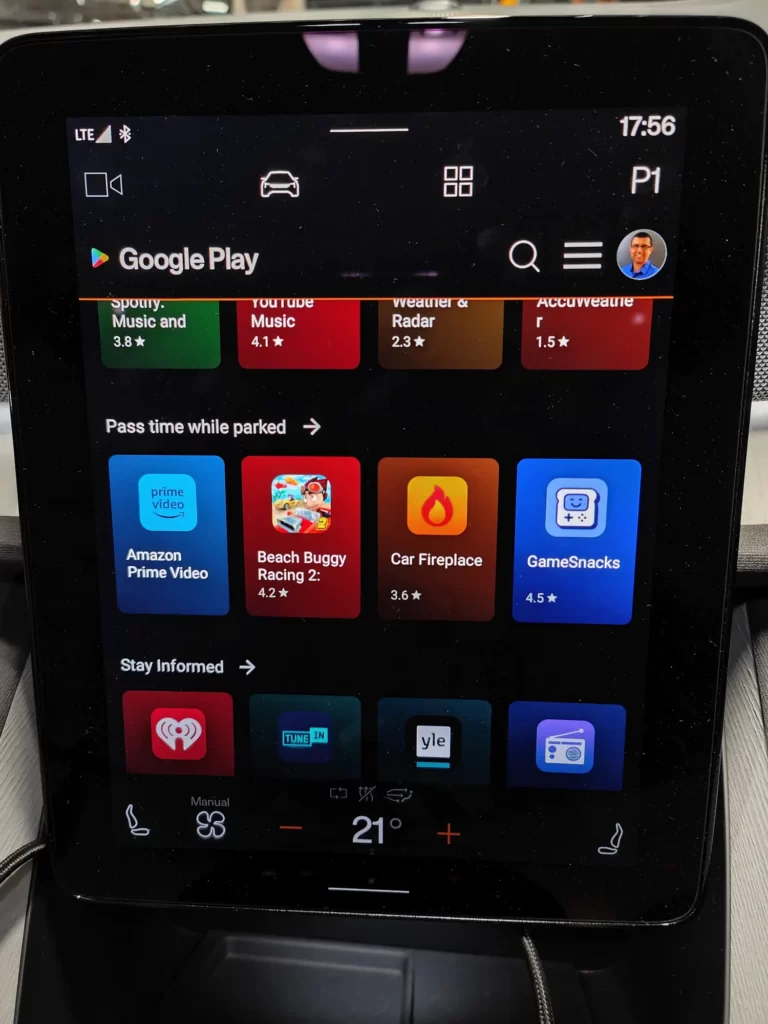
Adaptive Cruise Control over speeds down hills
In this 2024 model adaptive cruise control overshoots your set speed when going down hills, just like as the single motor standard range version of the Polestar I tested last year.
The maximum amount it overshoots is hard to tell without going down a really steep hill but I saw it go over by about 4 or 5km regularly at motorway speeds down slopes. Which Car reviewer John Law noticed the same thing in his Polestar 2 review earlier in 2023 “The adaptive cruise has a tendency to creep from the desired speed, sometimes up to 5km/h”.
I would rather have a set fixed maximum cruise control speed. Not overshooting going down hill where there could be a police speed trap.
According to Australian Polestar 2 owner Ben who I had a chat with:
“Polestar changed the Adaptive Cruise Control in an OTA update (2.6) to give it “flex” and not stick perfectly to the set speed. The tolerance is +/- 4km/h. This was said to be done to improve efficiency…..as a Polestar 2 owner (MY22) I am not worried by this but it would be nice to have an option to have either fixed speed / flex speed”.
As a side note Adaptive Cruise Control isn’t included as a standard feature, you have to pay for the $3,500 Pilot Pack option to get it. This is not satisfactory for a car this expensive. Even cheap Chinese hatchbacks EV’s priced under $40K in Australia like the MG4 now have Adaptive Cruise Control as a standard feature.
Space: the Final Frontier
In my opinion as a tall person lack of space for larger drivers and passengers is a weakness of the Polestar 2 in it’s original version and this 2024 version.
However there are plenty of Polestar 2 buyers who like the “snug” muscle car / fighter pilot cockpit style seating for the driver and front passenger.
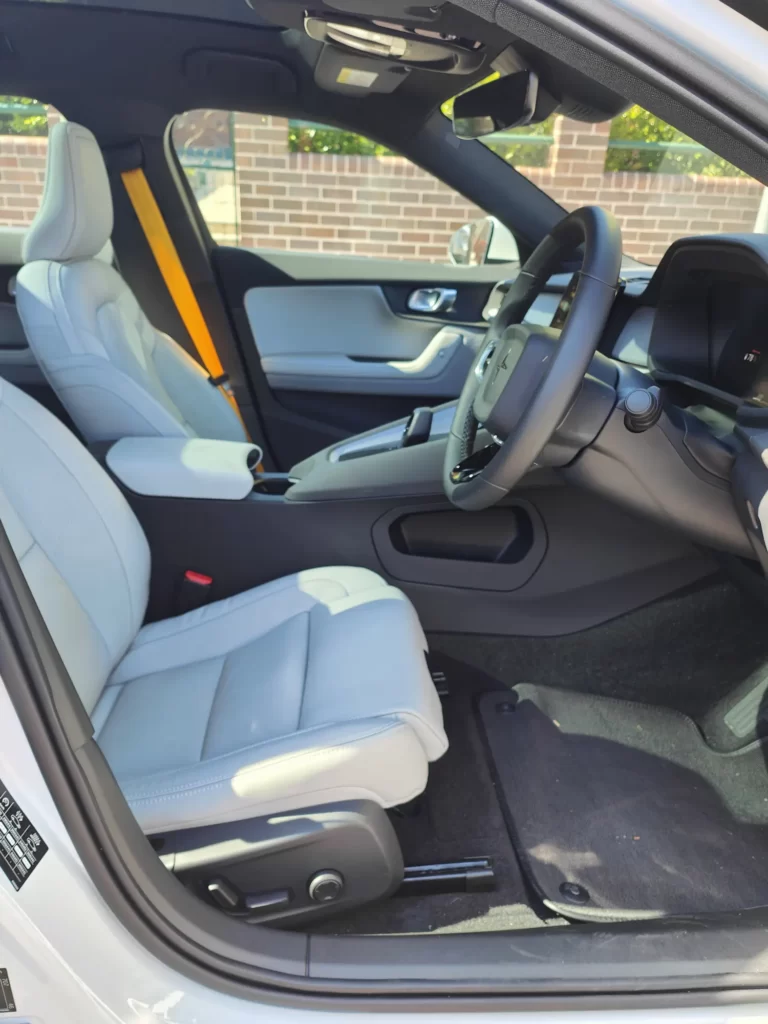
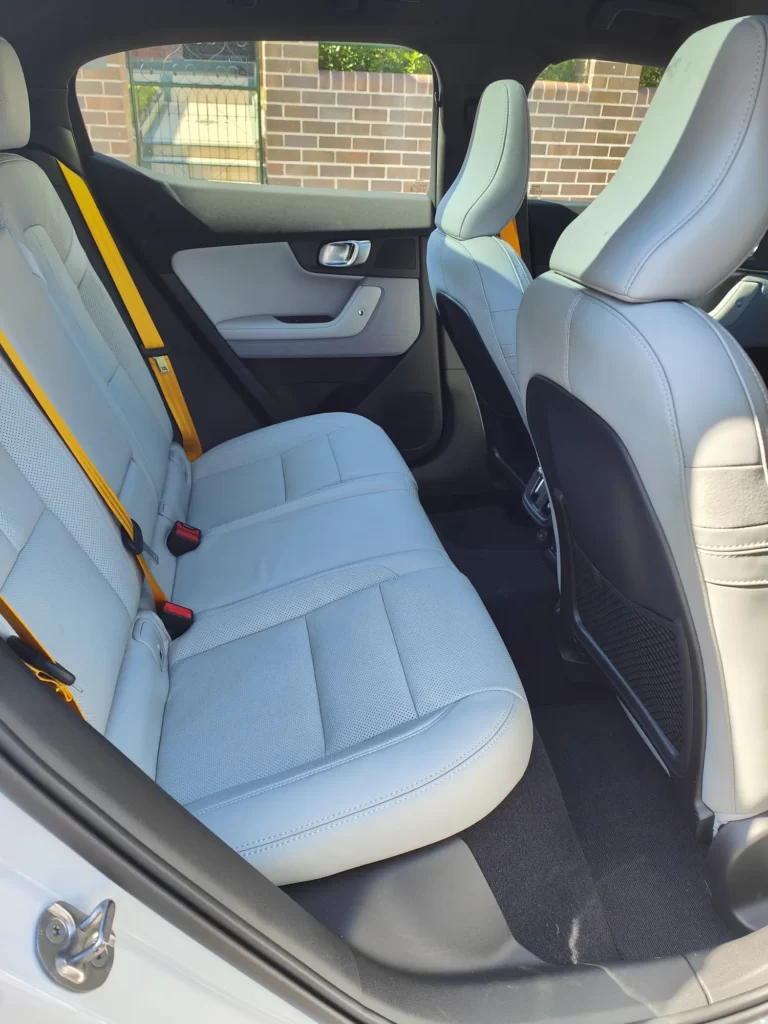
I think that while the Polestar 2 is possible to use as a family car it’s not optimised to be a family car like some of the other much more spacious options at a similar price point such as The Tesla Model 3 and Hyundai Ioniq 5.
The Polestar 2 is best suited for couples or single owners.
There is a quite large transmission tunnel bump in the centre of the rear seat footwell and the centre console is the largest of any EV I’ve tested. This is because the car uses Volvo’s Compact Modular Architecture which is shared with fossil fuel cars.
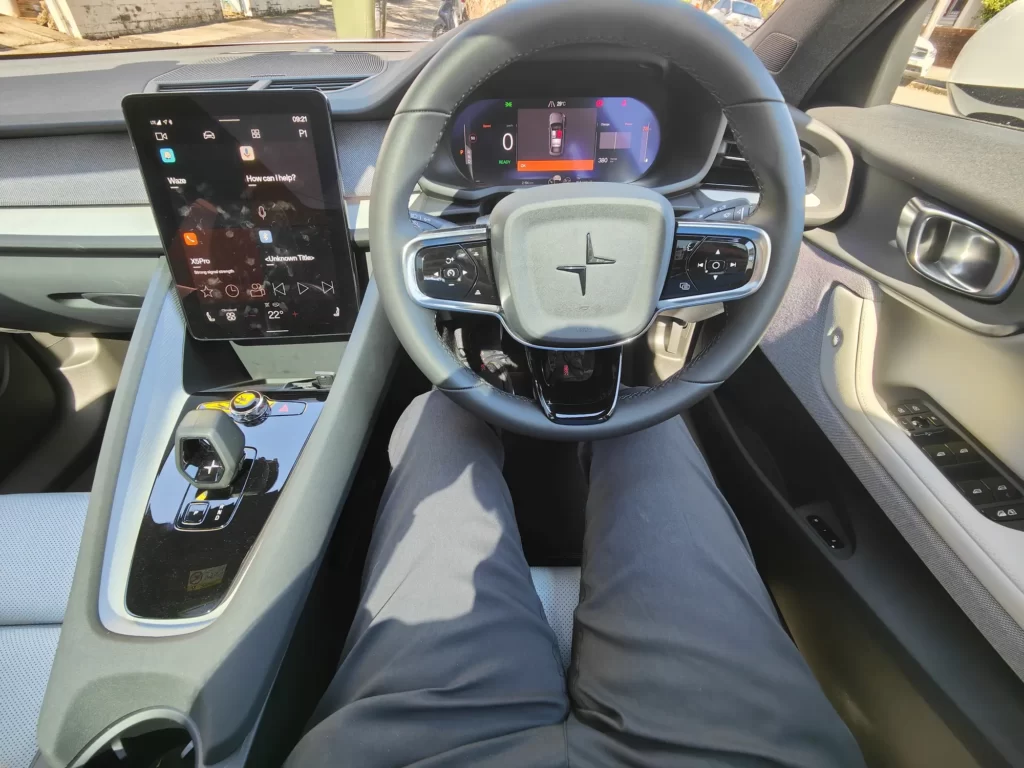

While driving I had enough legroom upfront but not on the left side due to the large centre console.
If the driver seat is adjusted for me (1.91m tall) I can’t fit behind it. Even a primary school age child would not be comfortable. A tall passenger in the back like me also will barely have any headroom space as well unless they slouch.
If the front passenger seat is adjusted for a 1.78m person I can barely fit behind it but it would only be comfortable for a very short trip maybe 15 minutes.
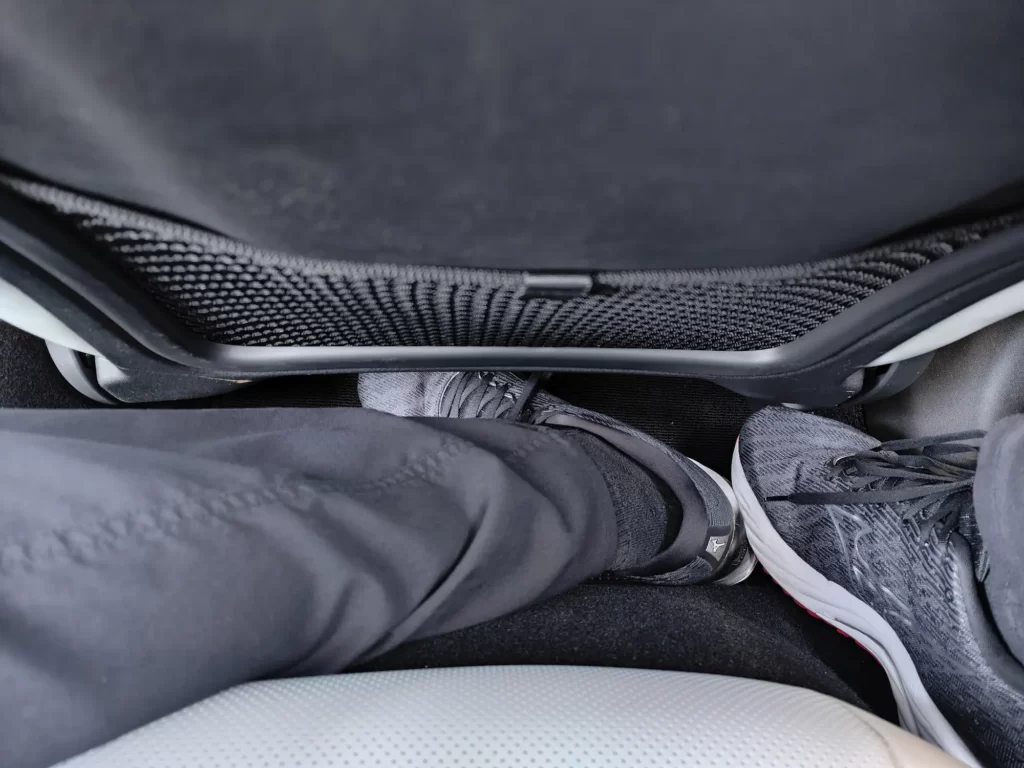
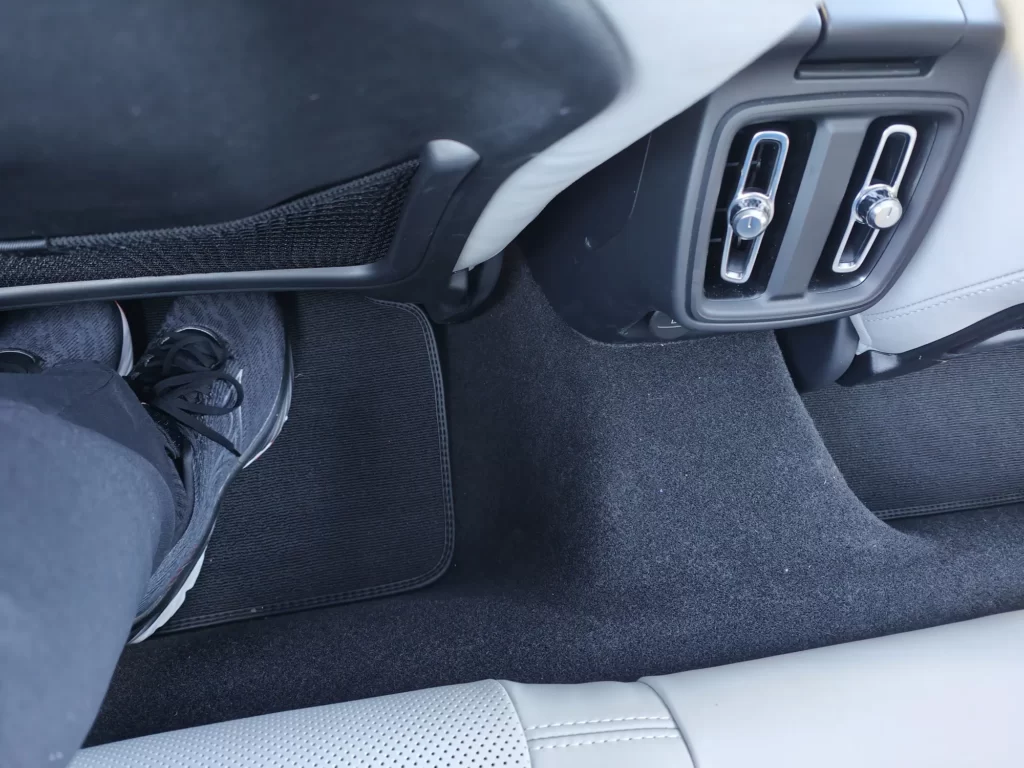
Forget about fitting a third adult in the centre rear seat as the transmission tunnel bump is large so there’s no foot space.
I showed the Polestar 2 to a neighbour who has several young children and he said the low entry and small rear door openings wouldn’t be popular with parents.
He commented that he couldn’t fit his booster seat inside, his baby capsule no way and a rearward facing seat would be a difficult fit as well.
Reader Ben who recently reviewed his Polestar 2 2022 LRSM (Pilot & Plus packs) on Electrifying Everything sent me this comment:
“As a Polestar 2 owner, with a young family (2 kids aged 7 & 2), I would disagree that it can’t be a family car”.
“We downsized significantly from a CX-9 and comfortably fit a rear-facing baby seat and a booster seat for 8 months, before having 2 front facing for a while before we decided our eldest was fine without a booster seat. I am 1.85m and my primary school-aged son has plenty of leg room when I am set in my seated position”.
“I would definitely recommend that people should see the car in person and take their car seats (as we did) for a test drive before making assumptions”

Leave a Reply